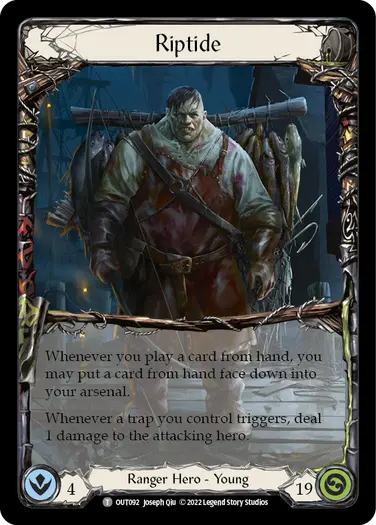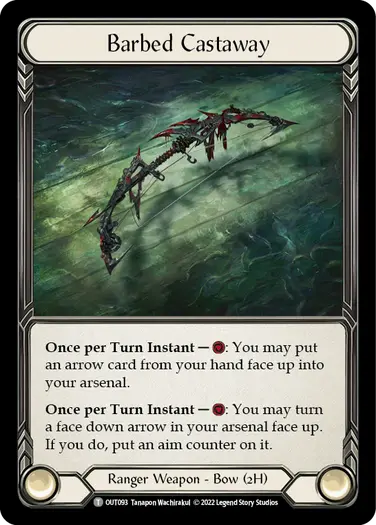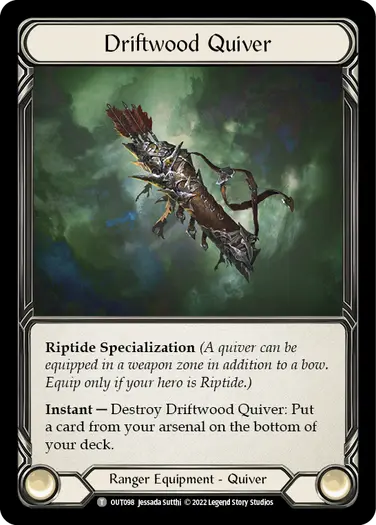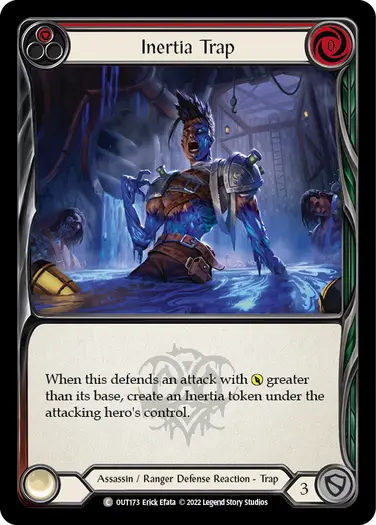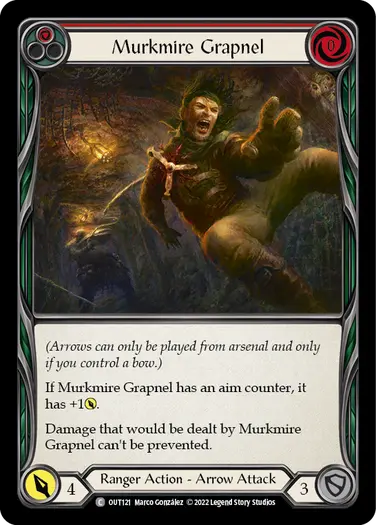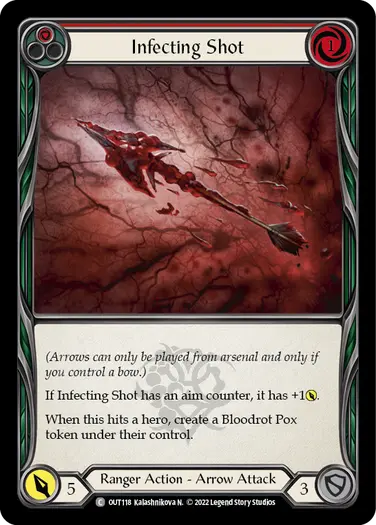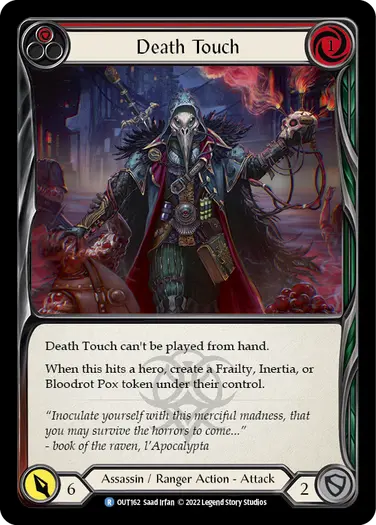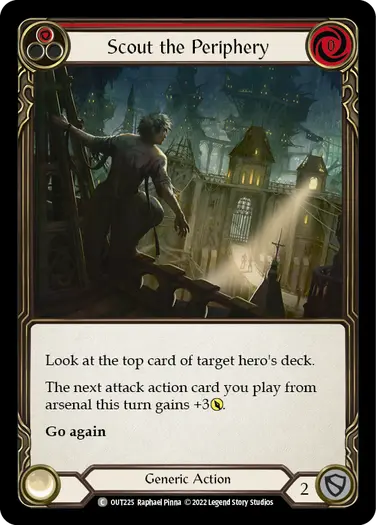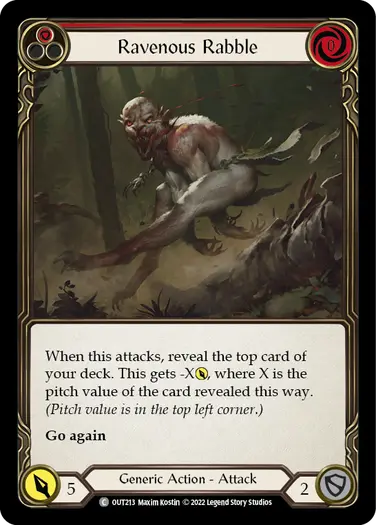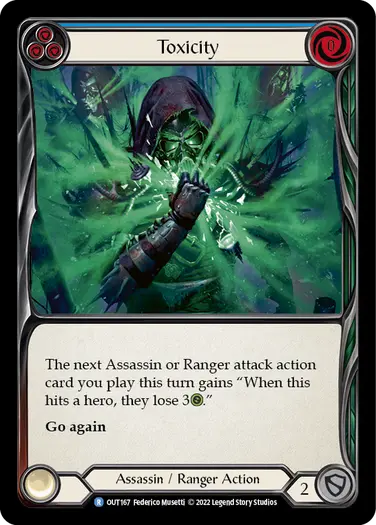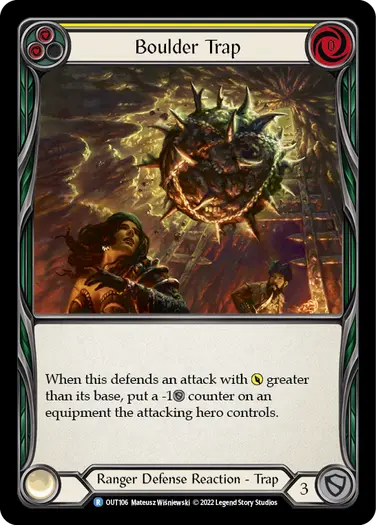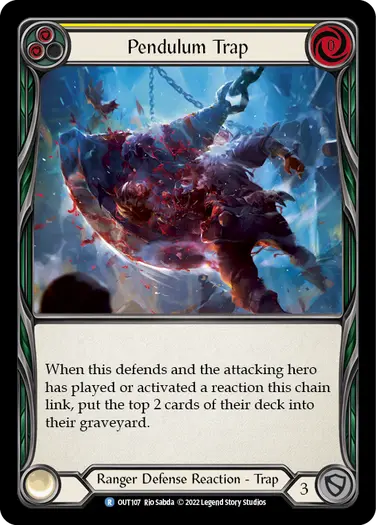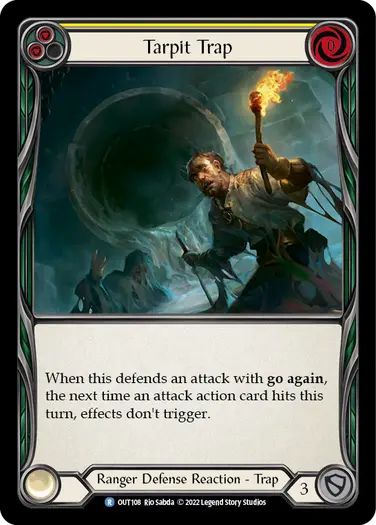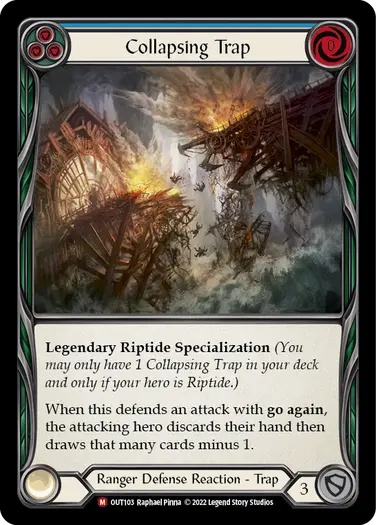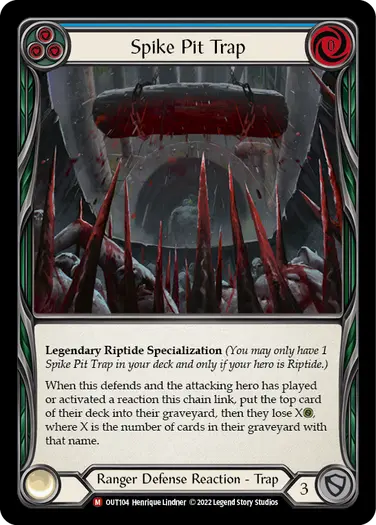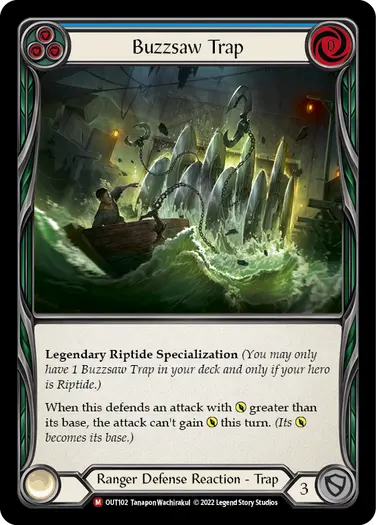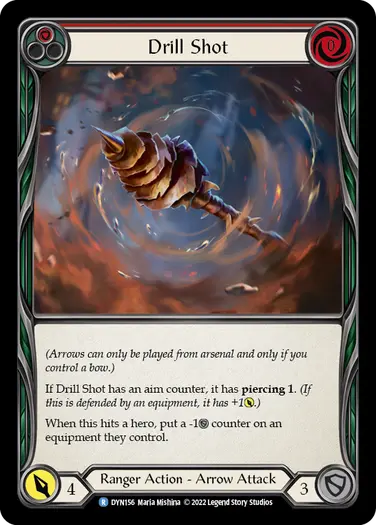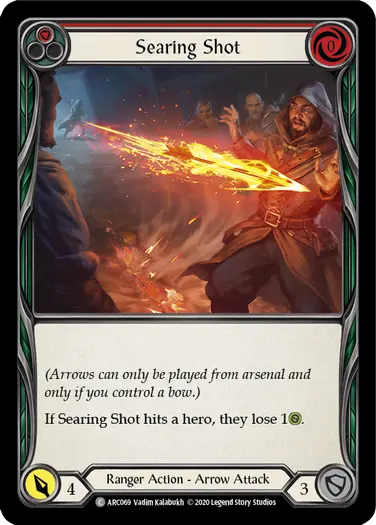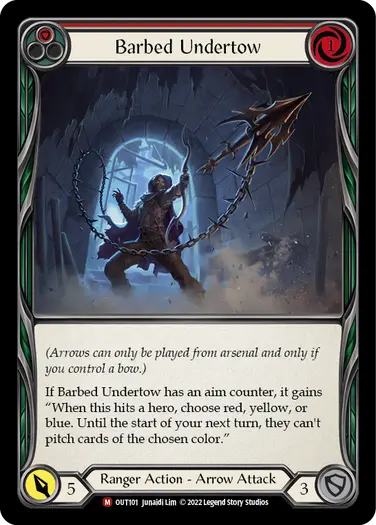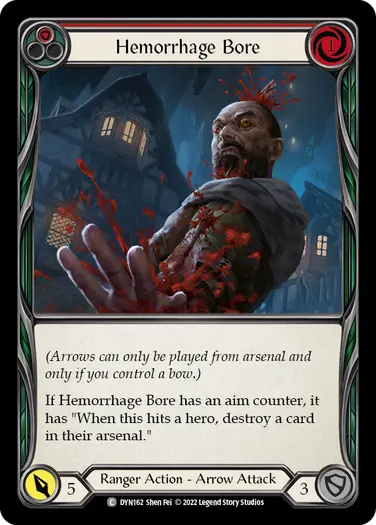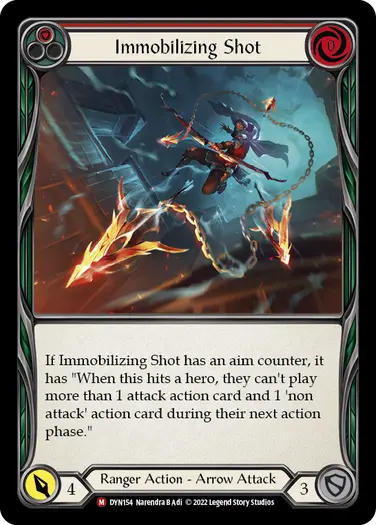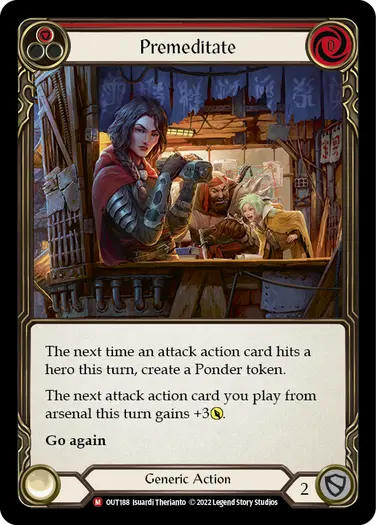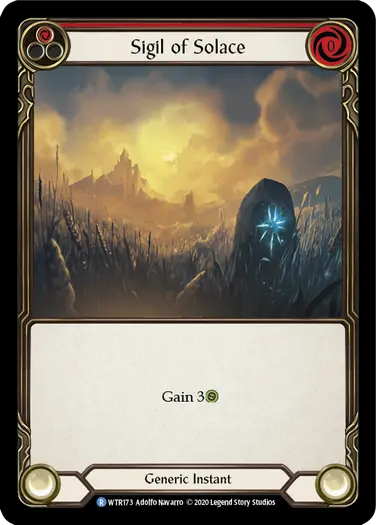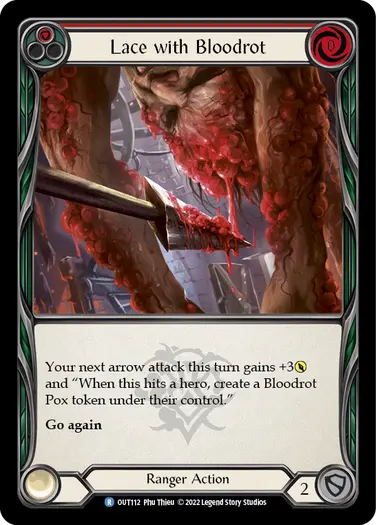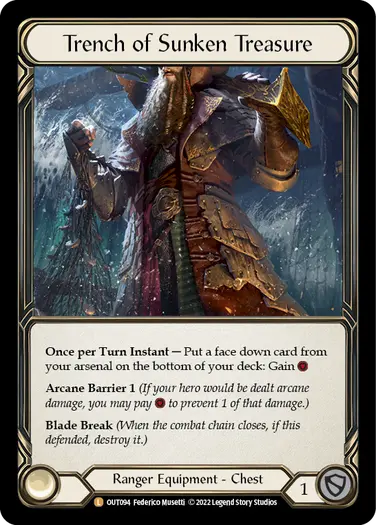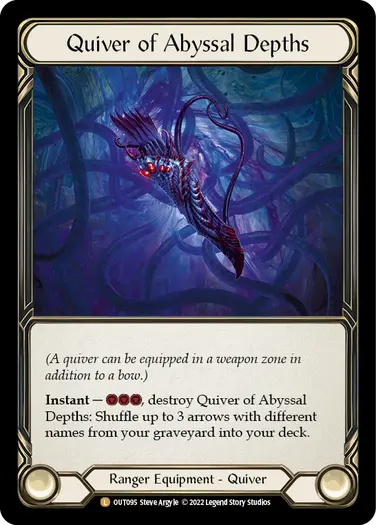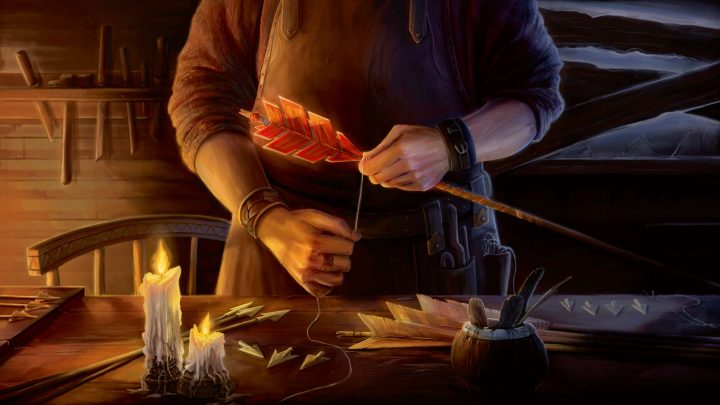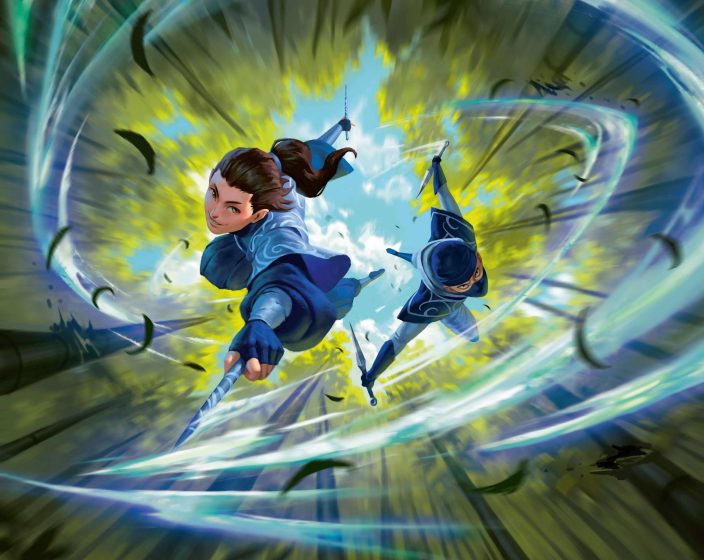Anthony Balmes is a developer at Legend Story Studios, and brings us the fifth chapter of a series of deep dives into the heroes in Outsiders, focusing on both limited and constructed play. Today we learn how to trip up our opponents with Riptide, Lurker of the Deep.
Squidge couldn’t believe his luck!
The grubby scavenger took another glance inside the small waterlogged chest he had stumbled upon, admiring its glittering contents. He snapped the lid shut, checked over each shoulder, and scurried towards the bridge, cradling his precious box like a newborn baby.
“CLANG!”
Squidge face planted into the dirt, scattering the gold and jewels, as a sharp pain roared through his right leg. He looked down in horror at his ankle, clamped between the rusty metal jaws of a dregtrap.
Whimpering, Squidge tried to pry the trap open with bony fingers, to no avail. A horrible grating voice floated through the cavern, as a sour stench filled the air.
“Here fishy fishy…”
Squidge started to panic, searching for some alternative escape… anything… anything at all.
With trembling breath he unsheathed his cutlass. Gritting his teeth he began to saw, ignoring the resulting spurts of blood, sheer terror and determination driving him through the pain.
At last he was free! Scrambling on his knees, Squidge scooped up as much treasure as his pockets could hold, and hobbled onwards onto the creaking bridge.
Maybe it was the adrenaline, or the shock, but he found himself starting to laugh. He had escaped by a hair’s breadth.
“CLUNK!”
Suddenly the wooden plank beneath his foot swung open, and he tumbled down into endless darkness, coins cascading like rain, screaming all the way to his demise.
Riptide lumbered out from his hiding spot and gazed down at his latest catch, eyes gleaming.
This was a big one.
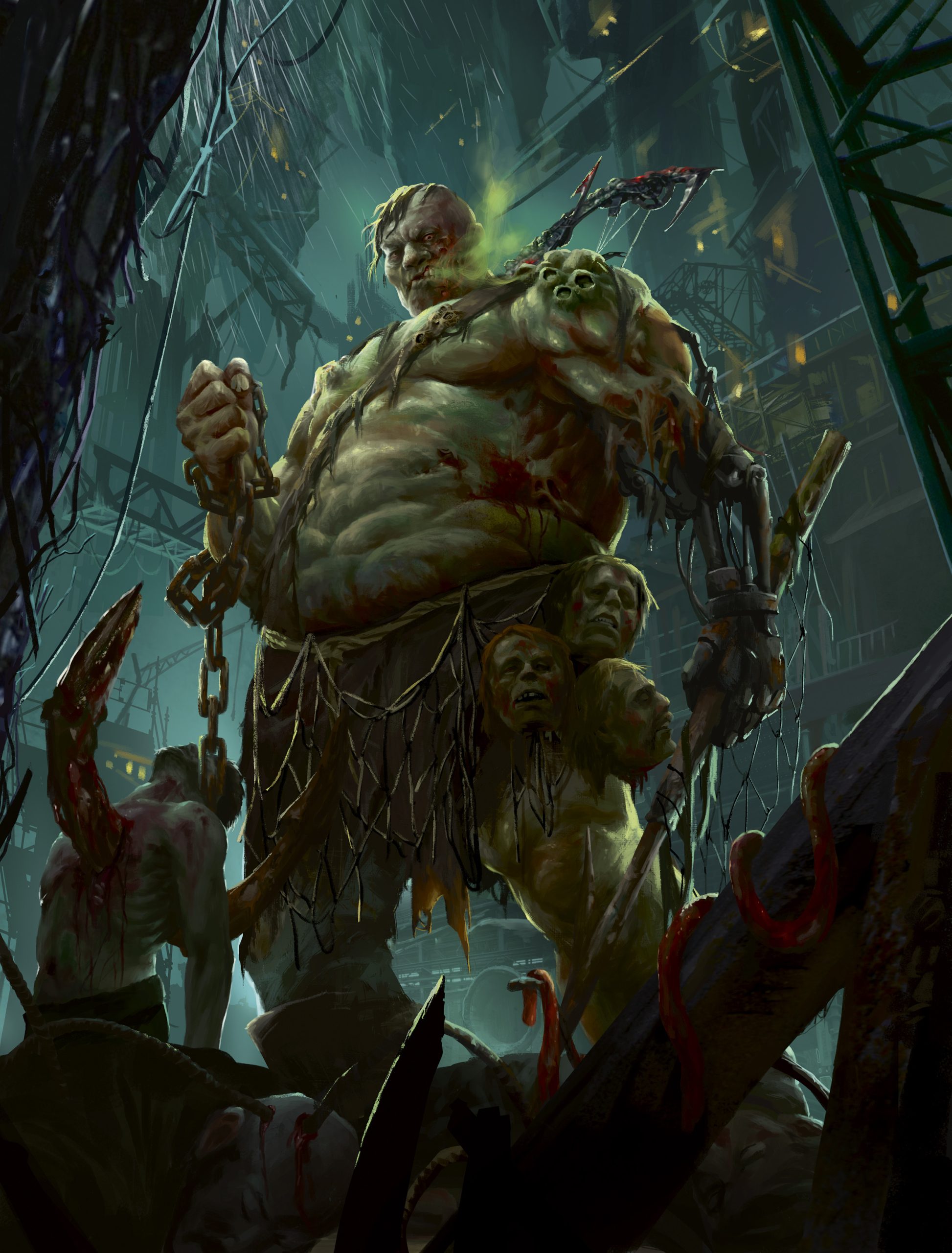
Draft
Have you ever wanted to roleplay being home alone during the Christmas holidays, outsmarting unsuspecting burglars with a series of makeshift contraptions?
Time to make that dream a reality! Rathe’s newest ranger will have you tripping up fools left and right, making those puny ninjas and assassins think twice about swinging daggers with go again while they’re at 1 life.
The main goal of drafting Riptide is pretty straightforward – it’s all about traps!
From very early on in the draft you should be picking traps if you’re seeing a lot of them, especially the hybrids. They’ll be your bread and butter, but even if you don’t end up on Riptide the hybrid traps are also very useful in other heroes.
Having a large number of traps in your draft deck is important for triggering Riptide’s damage dealing ability, and also countering lots of forced damage like Azalea’s dominate, Benji’s chip damage, and assassin attack reactions.
The damage might seem small at first but it can stack very quickly, and when combined with surprise Bloodrot Pox tokens your opponent can end up in very unsafe positions, even at 4 life.
The next cards you should be looking for are efficient attacks you can play from arsenal. Even with traps you’ll still need a good supply of threats to be able to push damage and force blocks from your opponent.
Try to prioritize attacks that will provide the best value. Riptide’s ability lets us put cards in our arsenal without needing to wait an extra turn or spend resources on Barbed Castaway.
We’re aiming to block carefully and swing back with something that we can pitch one card for, even if we draw all reds.
Remember that if the opponent ignores Bloodrot Pox tokens, that’s free value for us!
Lastly, in order to benefit from Riptide’s free arsenal, we want lots of ways to trigger it. We can play traps from hand to do this, but we also want to be able to use it proactively on our own turn.
0-cost cards with go again that threaten extra damage or encourage our opponents to block will round out the rest of your deck and help push that extra mile over the finish line.
Constructed
Riptide plays a little differently from the other rangers in Classic Constructed.
While Lexi goes wide with disruption and Azalea goes tall with pumped threats, Riptide is more methodical, preferring to slowly chip away at the opponent with efficient arrows and utilizing your traps correctly to deal damage.
Before we start loading in attacks, we should explore the key element of Riptide.
The traps in Outsiders fall into three categories:
- Traps that check for go again
- Traps that check for increased power
- Traps that check for reactions
Some of these traps are easier to trigger than others, while others are more situational, and you’ll learn quickly which ones are which.
Dedicating your sideboard to the more situational traps makes it easier to trigger Riptide’s damage dealing ability as often as possible.
For example, traps that check for go again aren’t always effective against guardians, but they are very effective against ninjas. Traps that check for increased power aren’t always effective against illusionists, but they are very effective against rangers. Traps that check for reactions aren’t always effective against brutes, but they are very effective against assassins.
Tailor the traps in your sideboard for the expected meta to ensure you bring the least amount of dead traps into each game.
Riptide is also equipped with his own unique set of flashy signature traps.
These three majestic specialization traps have the Legendary keyword for a good reason, and when you trigger one it’s the absolute pinnacle of ‘gotcha’ moments.
Because they’re also blue cards that block for 3, it’s worth playing them into almost every matchup as they’re useful in many different situations.
We’re also stoked to welcome back the original traps from Crucible of War.
These classic traps have a restriction that means you can only play them from arsenal, but this is easily achieved through Riptide’s ability by simply activating another trap from hand.
The Crucible of War traps do not have a condition that needs to be met in order for their effects to trigger, other than defending – so simply playing it in response to an attack will deal 1 damage to your opponent (regardless of whether they choose to pay the resource or not).
Now even if you were to play every single trap and manage to line each one up perfectly, that’s still only 30 damage, and no hero will typically fold to that (except possibly a whacky Kano with only attack actions – if that’s you, we won’t judge).
So the next logical step is adding attacks that can take chunks out of our opponent’s life, in order to whittle them down and clean up in the late game.
Playing cards from hand lets us cheat attacks into arsenal, and since our strategy is centered around blocking, we want those attacks to be as efficient as possible.
There are a number of 0-cost arrows in the ranger pool that we can load up just by playing another card from hand, and then fire at our opponent without needing to pitch anything.
Look for specific arrows that have on-hit effects, so that we can block with three cards, hopefully activating a trap in the process, and then send an annoying 4-power arrow back.
A new mechanic introduced in Dynasty and carried over in Outsiders is aim counters.
Using Riptide’s ability to place an arrow face down into arsenal, then flipping it up with Barbed Castaway to give it an aim counter is a great way to enable devastating on-hit triggers.
While some of these arrows are too good not to include in your deck, it’s worth noting that they often require 1-2 resources to pull off effectively. Sometimes you won’t mind pitching unused traps or other yellow cards to launch a particularly nasty arrow, but be wary of having too many 1-cost cards and having to take unnecessary damage just to pay for them.
Riptide thrives off high-value two-card plays. Look for 0-cost cards both inside and outside the ranger pool such as instants and non-attack actions with go again that will allow you to easily trigger Riptide’s ability and follow up with a 0-cost attack.
You don’t need too many of these, but they can be game-changing in the right moments.
You can’t go wrong with the common equipment in the ranger pool – it’ll get the job done, but there are some other standouts to keep an eye out for that will help you catch bigger fish.
Trench of Sunken Treasure is useful protection against wizards and runeblades, but also allows you to tuck unused traps to the bottom of your deck to be planted later, while freeing up your arsenal and giving you a spare resource to boot! It also protects your arsenal from one of Riptide’s main weaknesses – Command and Conquer.
New Horizon is one of the most powerful additions to the ranger inventory, allowing you to turn a Barbed Castaway activation into a second arsenal slot – useful for keeping a spare arrow at the ready while still using Riptide’s ability every turn.
Lastly, without a weapon that deals damage by itself, it pays to have some measures against getting fatigued. Cards like Salvage Shot can recur themselves if they hit, but having the on-demand ability to recycle some real threats in the late game so you can keep fighting just that little bit longer can make all the difference.
Success with Riptide can be somewhat dependent on the particular hero he is facing.
The more traps he can trigger easily the better the matchup usually is. Learning the play patterns of other heroes is much more important when playing Riptide compared to playing other heroes, since it can result in dealing 5-6 extra damage over the course of a game.
Good luck to all the trap enthusiasts out there, we hope you enjoy baiting some big game prey and reaping the rewards.
